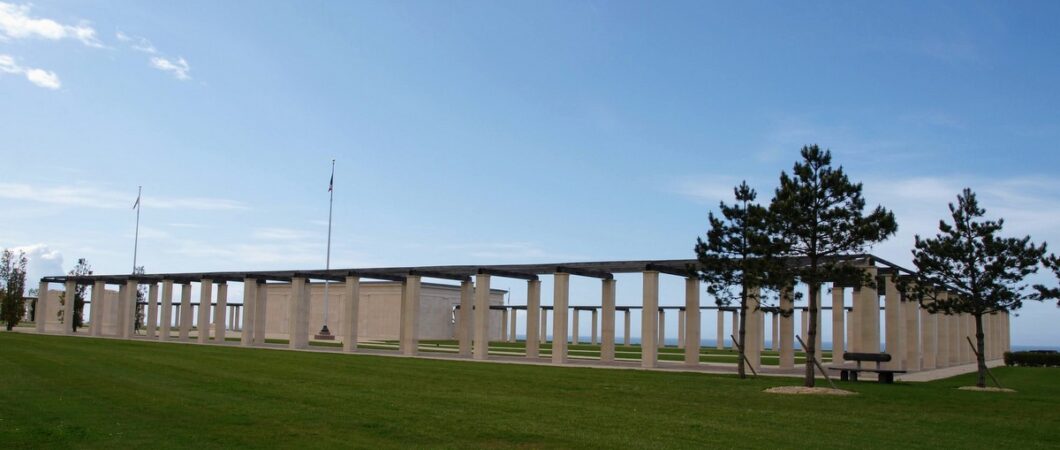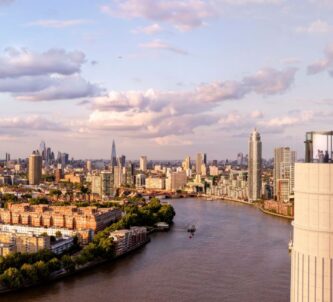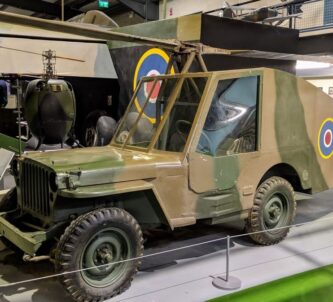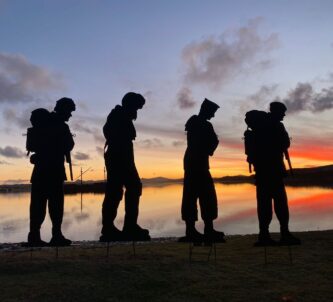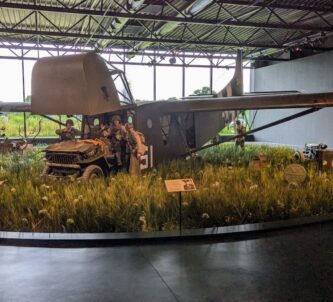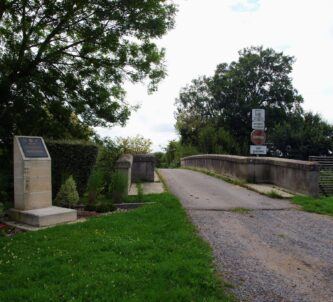The British Normandy Memorial lists the names of 22,442 servicemen & women serving under British command, who died in Normandy.
It was conceived during the 71st D-Day Anniversary reunion in 2015, in a chance conversation between a British veteran, George Batts, and the BBC broadcaster Nicholas Witchell. Batts, a Royal Engineer who had landed on Gold Beach on D-Day, pointed out that unlike the Americans, Canadians and French, the British didn’t have a national memorial in Normandy*. Witchell took it on board and resolved to make it happen.
D-Day Normandy Posts
Creating the British Normandy Memorial
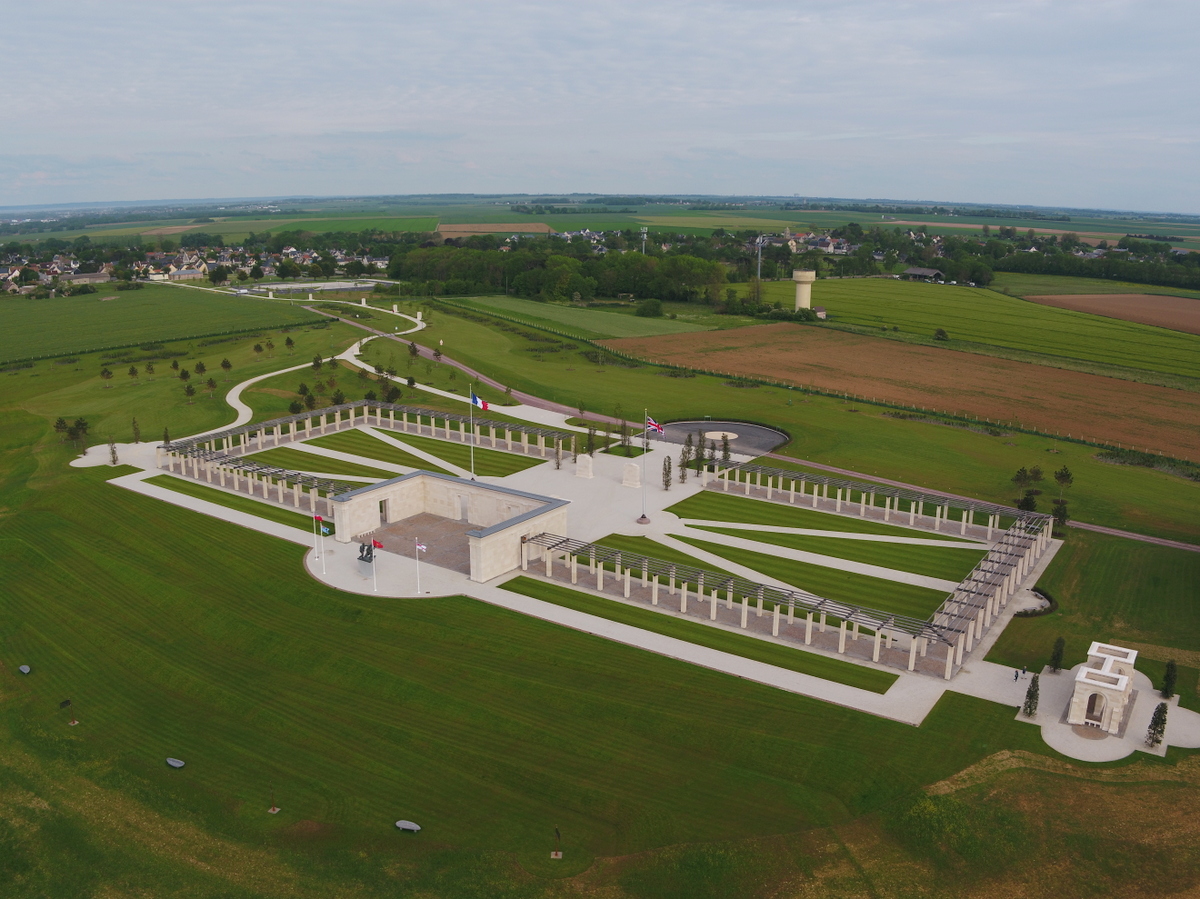
Within weeks Witchell was driving around Normandy searching for a potential site and had created the Normandy Memorial Trust, which immediately started looking for funds, a designer, and a team to create the memorial. The chosen designer was the architect Liam O’Connor, who had been responsible for the British Armed Forces Memorial in Staffordshire, and the Bomber Command Memorial in London.
Before long, four potential sites had been found. So the team took 30 veterans in a coach to view them and held a vote among 100 veterans**. The result was a near unanimous vote for the current site on a hill just outside Ver-sur-Mer overlooking Gold Beach.
Negotiations began with local landowners and the Mayor of Ver sur Mer, who were fully behind the project but there were problems over the early designs.
“They kept saying the designs were ‘trop lourd’ – too heavy,” recalls the memorial’s site manager, Sacha Marsac.
It was on the 13th iteration in front of a panel of 25 people that Liam O’Connor presented the idea of the pergola.
“There was a silence,” says Sacha, “and we all thought ‘oh no, not again’ but then a woman said ‘Merci. C’est léger’ – it’s light.”
The French were right. Everyone agrees now. The memorial is light, bright, open and airy. Visitors are uplifted by it.
The centrepiece of the memorial is a large bronze statue of three soldiers coming ashore, by sculptor David Williams-Ellis.
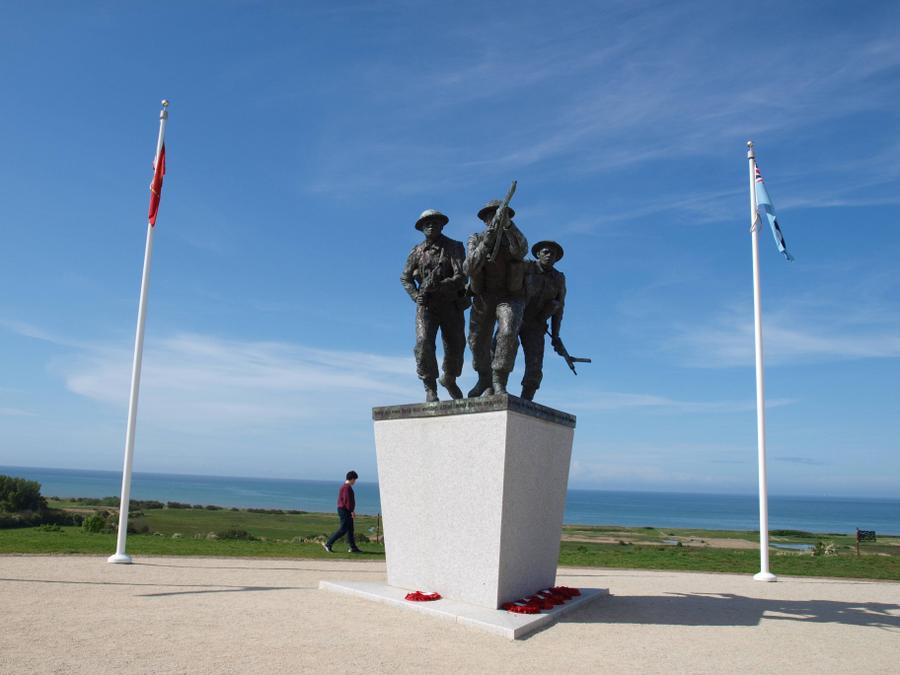
The statue was the first completed part of the site and was unveiled by President Macron and Prime Minister Theresa May when they inaugurated the site on 6 June 2019. Building work on the rest of the memorial then started in earnest.
Meanwhile the Normandy Memorial Trust research team had been scouring records from multiple sources to draw up the list of names. Not an easy job. The list includes the dead from the Navy, Army, Air Force and ‘others’ – for example, spies from SOE and attached war correspondents – and they come from 38 nations, some of which were colonies that no longer exist. No wonder it took them two years to build the list!
Construction work on the memorial ended in late 2020 and it was officially opened by the then Prince of Wales on 6 June 2021 via a video link (thanks to COVID) and the British Ambassador to France, Lord Llewellyn who was on site.
Visiting the British Normandy Memorial
The memorial is on a grand scale. From the car parks there is an 800m path to the memorial, with large stone stellae along its way that tell the history of the battle of Normandy in bite sized chunks.
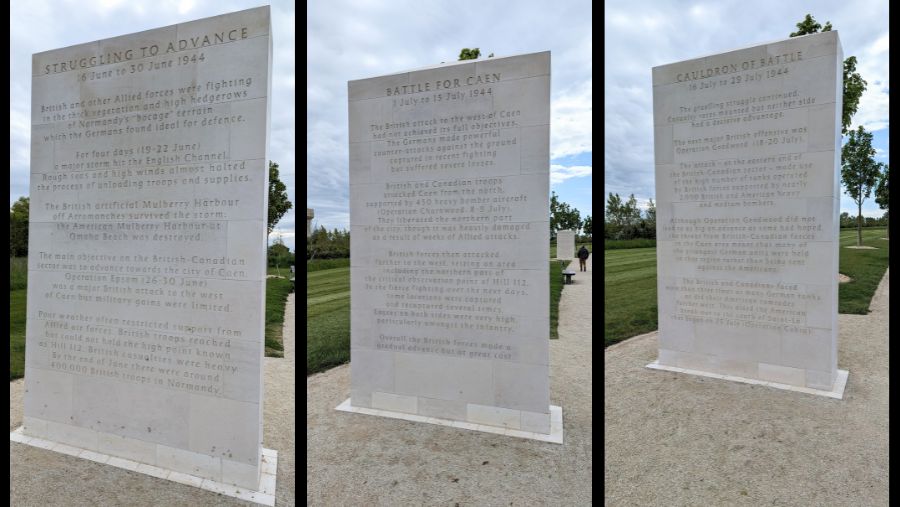
When you reach the memorial you pass through the pergola into the quadrangle where there are two large stellae summarising the events of D-Day itself in French and English.
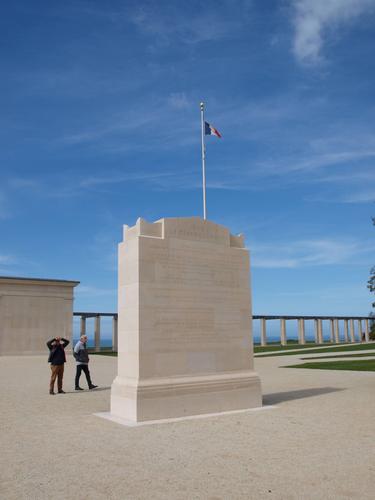
In the middle of the quadrangle there is a plinth with a commemorative wreath and shield, and an invocation to the ‘unknown soldier’.
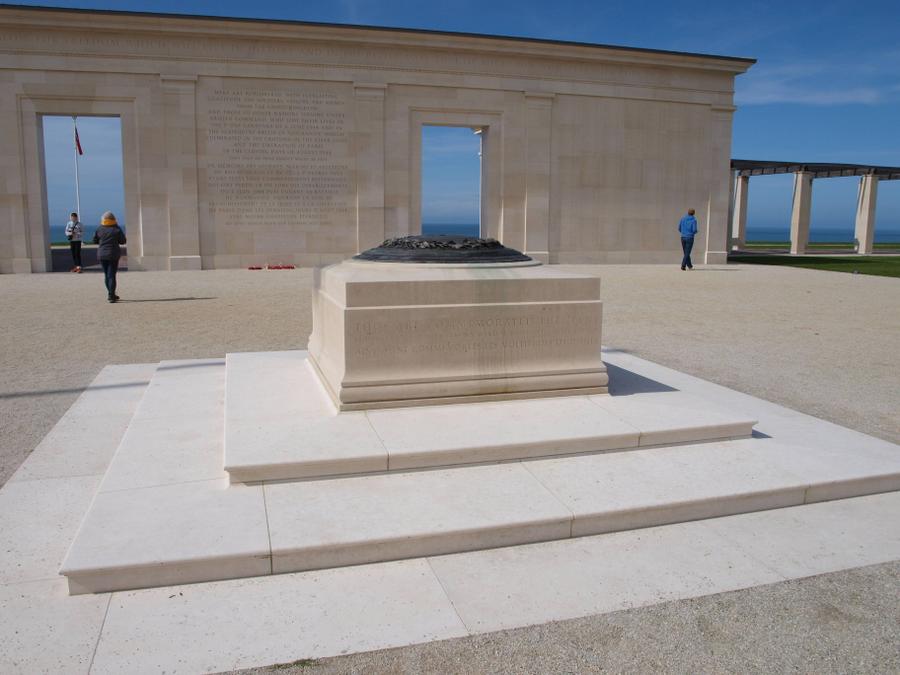
Facing you are the panels of the D-Day wall with two gaps between them leading to the Williams-Ellis statue of three soldiers. In the middle section is a general inscription but on the two panels either side are the 1,746 names of those killed on D-Day itself.
Thereafter the names of those killed during the Normandy campaign are presented chronologically on the 160 pillars of the pergola, running clockwise. Those killed on 7th June are on the first pillars and so on around to 31st August. There is space on the final pillar to add new names, as and when they are identified.
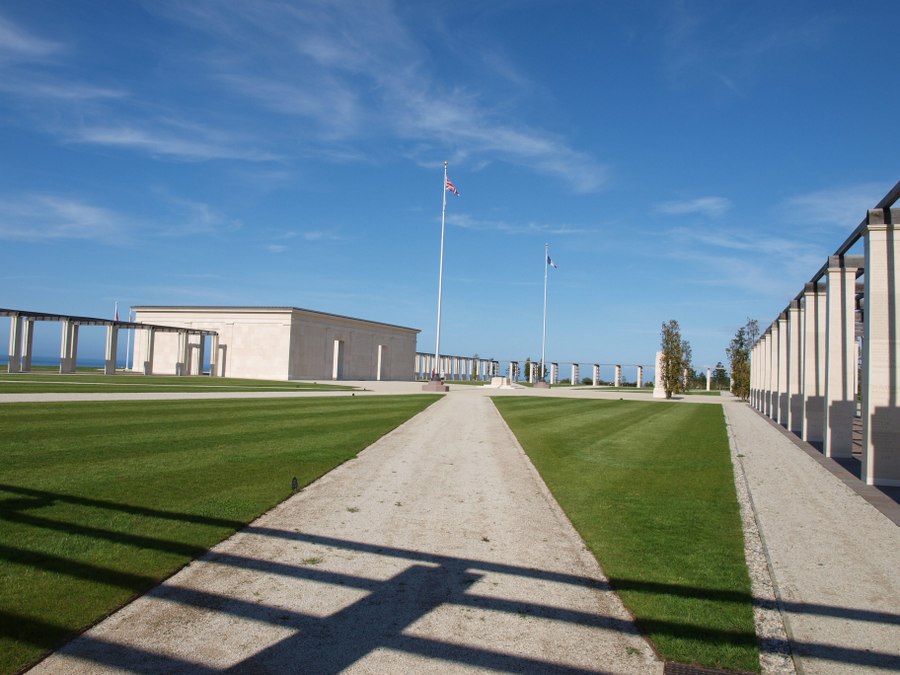
“We’re not done yet,” says Sacha. “We have a small team of researchers still working on this and we’ve identified a small handful of names we think we may have missed.”
Many visitors will have somebody in mind, that they want to look for. If you know the date they died, that will help narrow their search, but the Memorial has an app (it also has free Wi-Fi) that you can use to search for a name and it will tell you which column they are on. We used it to search for my late mother’s first husband, Squadron-Leader Bill Blessing DFC shot down in his Mosquito near Caen on 7th July. And there he was on column No. 141.
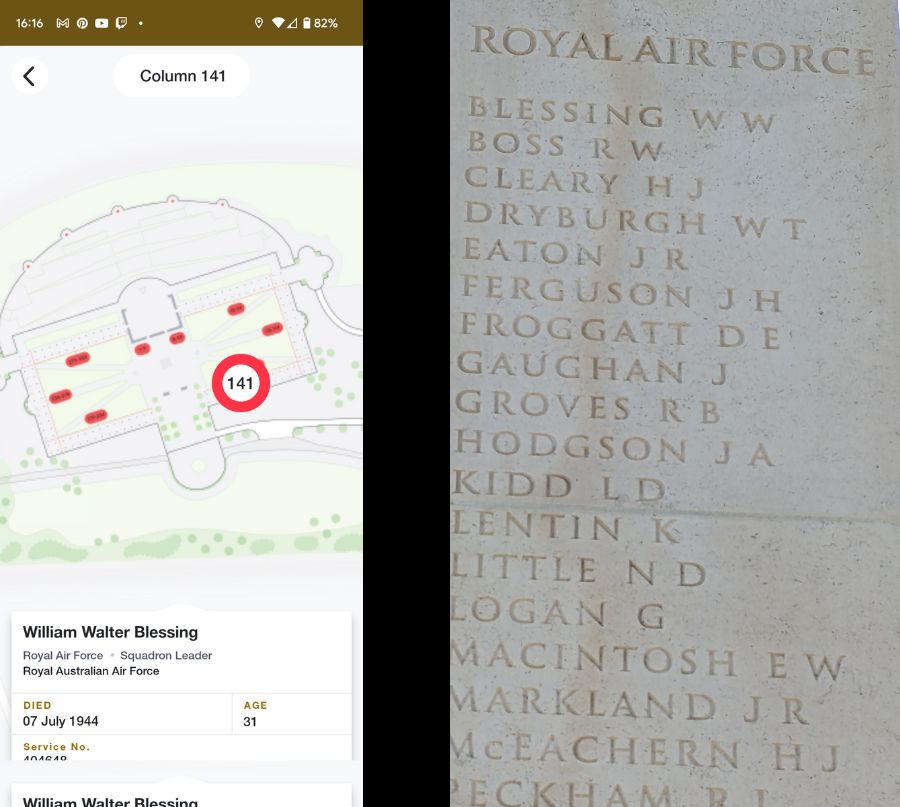
As you pass through one of the doorways in the D-Day wall to the three soldiers statue, you are met with an extraordinary panorama, assuming the weather is good. There are uninterrupted views down to Gold Beach 700 metres away (you can see down to Stan Hollis’ memorial hut on the beach where he came ashore to win the only Victoria Cross earned on D-Day***). Away to the left are the remains of the Mulberry B artificial harbour at Arromanches, and to the right you can see along the coast towards Saint-Aubin-sur-Mer.
At the west end of the memorial there is a separate memorial building to the French civilians who died during the Battle of Normandy.

British Normandy Memorial – Funding and Upkeep
The UK Government contributed £20m to the project and donors contributed the rest. The running costs are met through donations and a ‘Guardian’ scheme. Supporters can become ‘Guardians’ and pay a regular monthly amount. The memorial also charges a token 3 Euro per day parking fee.
The 20 hectare site is spotlessly maintained on behalf of the trustees by the Commonwealth War Graves Commission (CWCG) so you can imagine the high standards in which the footpaths, grass and plants are kept.
The site is completely accessible. There are no steps anywhere. These days many of our veterans are in wheelchairs, so that’s not surprising.
* They are variations of “memorials” but essentially a central place for the remembrance of nationals who died during the battle of Normandy. The Americans have the Cemetery at Colleville, the Canadians have the Juno Centre in Courseulles-sur-Mer, and the French have the Caen Memorial.
** The 100 veterans included the 30 who visited the sites and who then reported back to their colleagues in various Veteran Associations who weren’t able to go.
*** Hollis heroically attacked two German pillboxes on his way up the hill towards the memorial. One of them is near the memorial car park.
Declaration: I was on a self-driving research trip.
Factbox
Website:
British Normandy Memorial
Getting there: Av. Paul Poret
14114 Ver-sur-Mer
France
There is a large car park (3 Euros per day) with toilets.
Opening Hours:
The memorial is open all year round. Only the toilets are closed on Christmas Day, Boxing Day and New Year’s Day.

